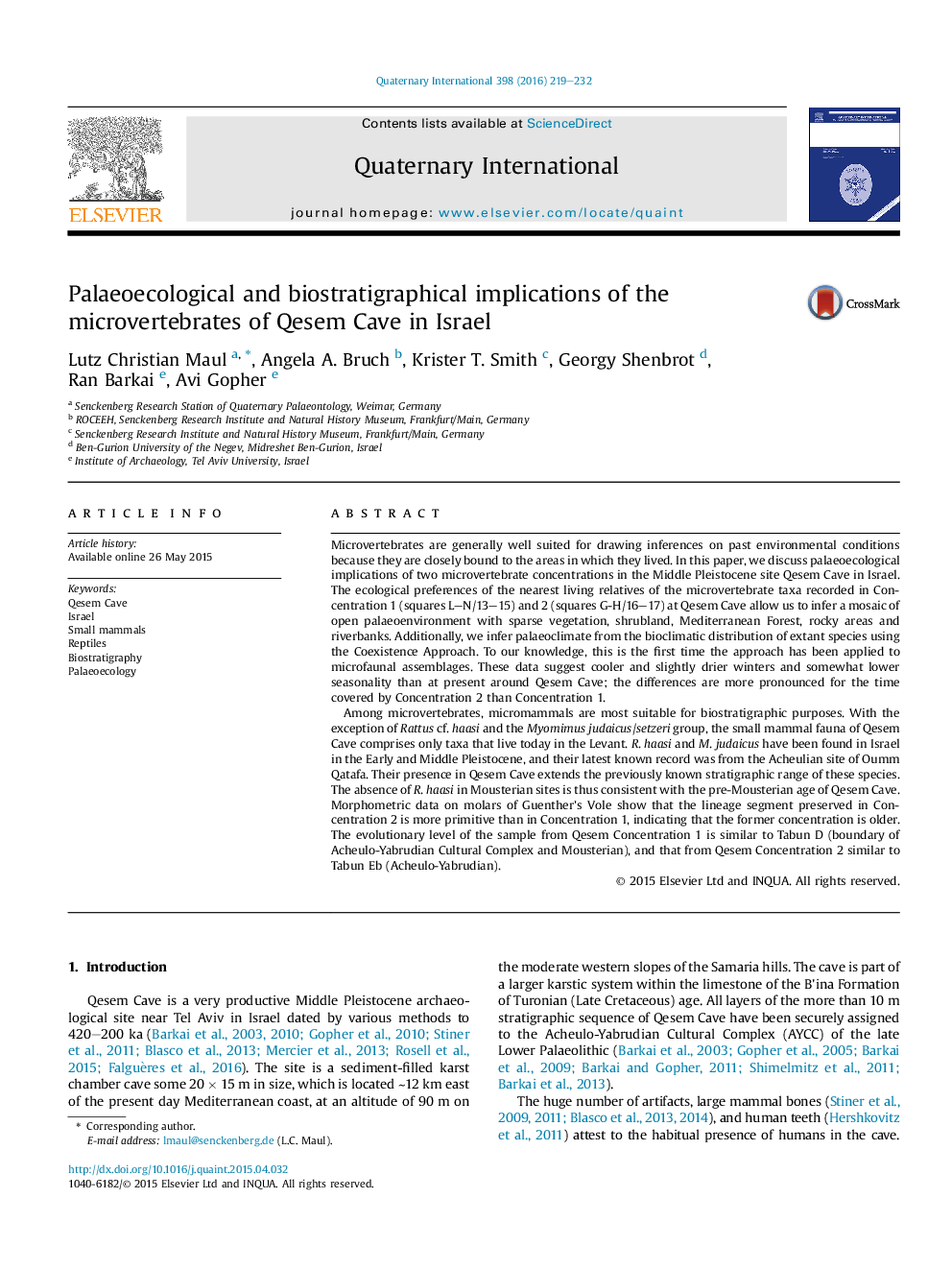| کد مقاله | کد نشریه | سال انتشار | مقاله انگلیسی | نسخه تمام متن |
|---|---|---|---|---|
| 1040296 | 1484100 | 2016 | 14 صفحه PDF | دانلود رایگان |
Microvertebrates are generally well suited for drawing inferences on past environmental conditions because they are closely bound to the areas in which they lived. In this paper, we discuss palaeoecological implications of two microvertebrate concentrations in the Middle Pleistocene site Qesem Cave in Israel. The ecological preferences of the nearest living relatives of the microvertebrate taxa recorded in Concentration 1 (squares L–N/13–15) and 2 (squares G-H/16–17) at Qesem Cave allow us to infer a mosaic of open palaeoenvironment with sparse vegetation, shrubland, Mediterranean Forest, rocky areas and riverbanks. Additionally, we infer palaeoclimate from the bioclimatic distribution of extant species using the Coexistence Approach. To our knowledge, this is the first time the approach has been applied to microfaunal assemblages. These data suggest cooler and slightly drier winters and somewhat lower seasonality than at present around Qesem Cave; the differences are more pronounced for the time covered by Concentration 2 than Concentration 1.Among microvertebrates, micromammals are most suitable for biostratigraphic purposes. With the exception of Rattus cf. haasi and the Myomimus judaicus/setzeri group, the small mammal fauna of Qesem Cave comprises only taxa that live today in the Levant. R. haasi and M. judaicus have been found in Israel in the Early and Middle Pleistocene, and their latest known record was from the Acheulian site of Oumm Qatafa. Their presence in Qesem Cave extends the previously known stratigraphic range of these species. The absence of R. haasi in Mousterian sites is thus consistent with the pre-Mousterian age of Qesem Cave. Morphometric data on molars of Guenther's Vole show that the lineage segment preserved in Concentration 2 is more primitive than in Concentration 1, indicating that the former concentration is older. The evolutionary level of the sample from Qesem Concentration 1 is similar to Tabun D (boundary of Acheulo-Yabrudian Cultural Complex and Mousterian), and that from Qesem Concentration 2 similar to Tabun Eb (Acheulo-Yabrudian).
Journal: Quaternary International - Volume 398, 4 April 2016, Pages 219–232
